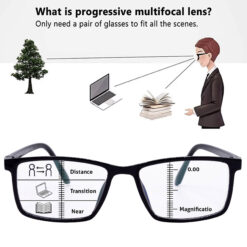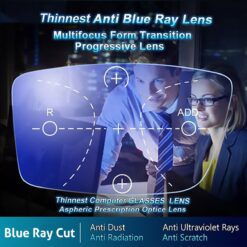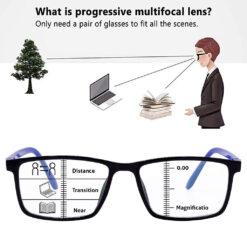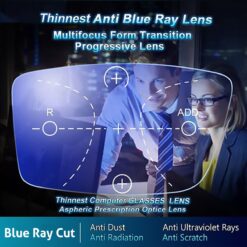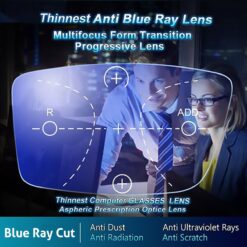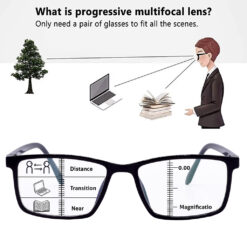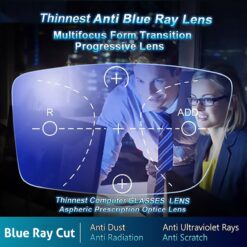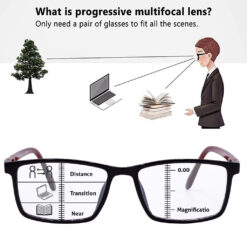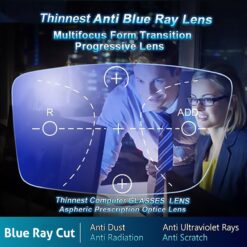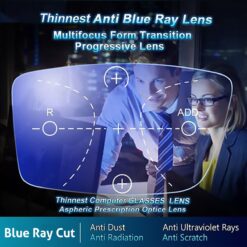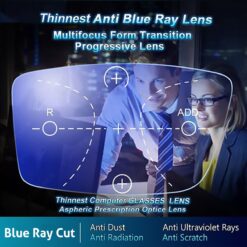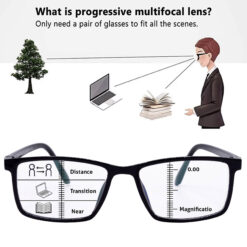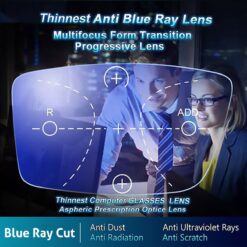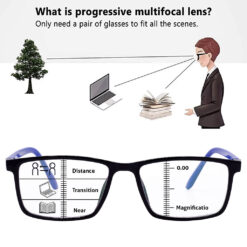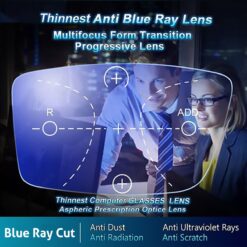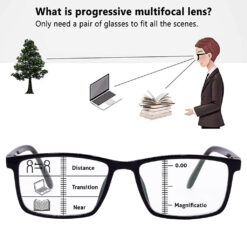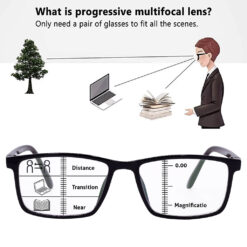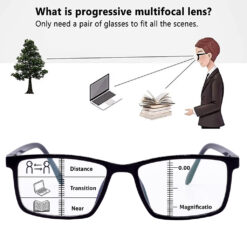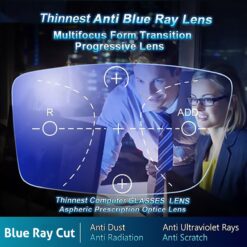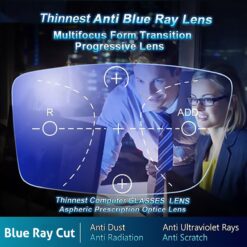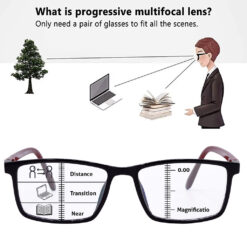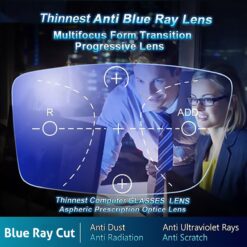Progressive Reading Glasses
Progressive Reading Glasses
Progressive Reading Glasses
Progressive Reading Glasses
Progressive Reading Glasses
Progressive Reading Glasses
Progressive Reading Glasses
Progressive Reading Glasses
Progressive Reading Glasses
Progressive Reading Glasses
Progressive Reading Glasses
Progressive Reading Glasses
Progressive Reading Glasses
Progressive Reading Glasses
Progressive Reading Glasses
Find the Right Anti-Glare Progressive Reading Glasses Online
Buying Anti-Glare Progressive Reading Glasses online is easier than ever, but the trick is getting the right blend of clarity, comfort, and customization so daily tasks feel effortless from the first wear. If reading on a phone, looking at a laptop, and checking signboards are part of a normal day, a well-fitted pair of progressive glasses can replace multiple pairs and keep vision consistent without switching frames every hour. The primary keyword, Anti-Glare Progressive Reading Glasses, is more than just a label; it’s the promise of crisp, reflection-free vision across distances, with the added benefit of blue light comfort for screens and reduced eye strain under harsh indoor lights. Here’s how to pick the best pair and make it work for work, leisure, and everything in between.
What Are Progressive Glasses? (Progressive Glasses Meaning)
Progressive glasses are multifocal lenses with a gradual change in power from distance at the top to near at the bottom, giving clear vision at multiple distances without a visible line on the lens. Think of them as a smooth ramp instead of a staircase—no harsh jump, no “line” like traditional bifocals, just seamless focus from far to near as the eyes shift naturally through the lens. People often search Progressive Glasses Meaning or Progressive Lens Meaning to understand if it’s suitable for presbyopia, the age-related reduction in near focus; if reading menus feels tough or the phone needs to be held further away, progressives can help with comfort and posture. The magic is in the corridor design, which balances sharp zones for distance, intermediate (screens), and near (reading), while minimizing distortion at the edges. Once aligned correctly with pupillary distance, the lenses deliver clarity without the annoying head-bob routine.
प्रोग्रेसिव लेंस क्या होता है?
ये एक ऐसा लेंस होता है जिसके ऊपर वाले हिस्से से दरवाजे की स्पष्टता मिलती है, बीच का हिस्सा कंप्यूटर या मध्यवर्ती दूरी के लिए होता है, और नीचे वाले हिस्से से पढ़ने का काम आसान हो जाता है। इसमें कोई विजिबल लाइन नहीं होती, इसलिए लुक मॉडर्न रहता है और विजन ट्रांजिशन स्मूथ लगता है। अगर फोन, लैपटॉप, और किताबें सब इस्तेमाल करते हों, तो एक ही चश्मे में तीन दूरियों का काम हो जाता है—लाइन के बिना।
Varifocal vs Multifocal: What’s the Difference?
The words varifocal, multifocal, and progressive lenses often overlap in everyday use; varifocal and progressive usually mean the same thing, while multifocal is a broader category covering any lens with more than one focus power. The key difference isn’t the label; it’s the design. Progressives give a continuous blend across distance zones, whereas lined bifocals or trifocals show visible demarcations. If the goal is modern aesthetics and natural eye movement, progressive lenses check both boxes while keeping the look clean and contemporary.
Why No Visible Line Matters
That faint line on bifocals can be distracting and can also cue others that the lens is split between powers. Progressives keep things seamless; vision shifts feel more natural, and the adaptation is more about learning eye and head movement than dealing with abrupt jumps. Plus, no line means less glare artifacting off a hard boundary, making anti-glare coatings more effective for polished, low-reflection clarity.
Why Choose Anti-Glare Progressive Reading Glasses
Anti-Glare Progressive Reading Glasses combine the power of seamless focusing with coatings designed to tackle reflections from screens, tube lights, and headlights. Without the coating, every bright source throws back tiny reflections that reduce contrast; with a quality anti-glare layer, details look sharper, whites look cleaner, and eyes feel less strained after long hours. If video calls, spreadsheets, and late-night reading are part of the routine, the anti-glare finish can be the difference between powering through and tapping out with tired eyes. It also makes lenses look clearer to others—fewer reflections on the surface mean better eye contact and sharper photos.
Cut Reflections, Boost Clarity
The anti-glare layer is like decluttering a window; the view is the same, but crisper. By reducing surface reflections, the lens passes more useful light to the eye, improving contrast and reducing strain in tricky lighting. It’s especially noticeable under LED panels, backlit screens, or while driving at night when oncoming lights usually “bloom.” Pairing anti-glare with progressive lenses means both a better visual experience and a more polished look day to day.
Blue Light Progressive Glasses for Screens
Blue light progressive glasses combine the multifocal design with blue cut technology that filters high-energy visible light from screens and LEDs. While blue light doesn’t need to be scary, cutting harsh peaks can reduce perceived glare, improve comfort, and help maintain steady screen use without watery eyes. For those clocking hours on phones and laptops, blue light progressive glasses deliver a soothing, balanced visual tone, especially at intermediate range.
Night Driving and Indoor Lighting Comfort
That hazy halo around headlights or reflective glare off glossy floors can be a constant irritation; anti-glare progressives mitigate that bloom, helping the eyes focus on what matters—lanes, signboards, faces, and text. Under indoor lighting, the same effect makes reading more pleasant and makes displays look more neutral, so colors and text pop without glare washing them out.
Progressive Lens Benefits You’ll Notice Daily
Every day brings a mix of distances—glancing at a phone, checking a laptop docked slightly farther away, spotting a friend across a room, then reading a label up close. Progressive lenses help glide through all of that without swapping glasses or pulling them down the nose. The experience feels like the eye has its own zoom feature, but it’s the lens doing the heavy lifting, maintaining a smooth visual corridor from top to bottom. This reduces eye strain and limits the posture compromises many slip into when trying to find focus.
Clear on Top, Sharp at Near: Seamless Transitions
Think of the lens like a smooth slide; the top gives crisp distance vision, the middle keeps screens steady, and the bottom brings small text into pinpoint focus. No clicks, no jumps—just gentle transitions. Once the brain maps the sweet spots, navigating the lens becomes instinctive, and tasks that felt frustrating—like reading small print after a Zoom call—become easy again.
Natural Posture, Less Head Tilt
With the right corridor width and frame fit, there’s less chin-lift to find the near zone and less neck twist to clear intermediate blur. For desk-heavy routines, this matters more than it seems; a small improvement in posture over hours adds up to less fatigue and fewer headaches. Choosing a design that matches daily habits unlocks this comfort quickly.
Comfort for Work, Home, and Travel
Work calls, household reading, store visits, and travel signage—progressives are built for these transitions. On a busy day, the gift isn’t just clarity; it’s continuity. The mind stays on the task instead of the tool, which is how eyewear should feel—supportive, invisible, and dependable.
Progressive Lens Advantages and Disadvantages
Progressive lenses are powerful tools, but like any tool, they come with trade-offs. Knowing both sides helps set the right expectations and makes adaptation faster and smoother.
Advantages: One Pair for All Distances
One frame handles distance, intermediate, and near, which means fewer swaps, cleaner routines, and a more natural reading flow at home and work. The no-line design keeps the look modern, and when paired with anti-glare and blue cut, the lenses deliver sharp, versatile performance across lighting setups and screens.
Disadvantages: Adaptation and Peripheral Swim
Some users experience soft blur at the extreme sides of the lens—often called “swim”—because of how multiple powers blend. It’s not a defect; it’s a design characteristic. Also, expect a 3–14 day adaptation window where the brain learns the corridor map and head-eye mechanics. Choosing a personalized or premium design usually reduces swim and speeds up adjustment.
Tips to Reduce Adaptation Time
Wear the new glasses full-time for the first week, point the nose toward what needs to be seen, and let the eyes look through the correct zone instead of rolling to the edges. Keep screens at a comfortable middle distance and hold reading material slightly lower to catch the near sweet spot. If needed, minor frame angle tweaks can do wonders.
Best Progressive Glasses Online: What to Look For
Shopping online brings variety and convenience, but the quality comes from design, measurements, and coatings. A good checklist saves time and increases satisfaction, especially when buying progressives for the first time.
Lens Design Tiers: Standard, Premium, Personalized
-
Standard: Good for general use, with a practical corridor and solid clarity for most tasks.
-
Premium: Wider intermediate zone, less distortion, better for screen-heavy days.
-
Personalized: Customized to frame shape, tilt, vertex distance, and PD; best clarity, minimal swim, fastest adaptation.
Materials: Lightweight, Durable, Scratch-Resistant
Look for lightweight materials that reduce nose pressure, impact-resistant options for daily use, and hard-coat layers that fight micro-scratches. A lighter lens with balanced frame geometry makes all-day wear comfortable.
Coatings: Anti-Glare, Blue Cut, UV, Hydrophobic
Anti-glare cuts reflections, blue cut softens screen harshness, UV blocks long-term exposure, and hydrophobic layers keep smudges and water marks at bay. This combo keeps lenses clear, easy to clean, and reliable in all environments.
Progressive Glasses for Reading and Screens
Choosing the right progressive for reading depends on where and how reading happens—on a phone, paperback, tablet, or mixed with spreadsheets on a larger monitor. If most time is spent at the desk, an office progressive with an enhanced intermediate can feel like a productivity boost.
Reading Progressive Glasses vs Office Progressives
Reading progressives emphasize a wider near zone for books and phones, while office progressives widen the intermediate area for screens and desk work. If the day is screen-first with occasional reading, office progressives usually win; if it’s reading-first with light screen time, reading progressives are the better bet.
Blue Light Progressive Glasses for Digital Work
Blue light progressive glasses maintain contrast on LED and LCD screens, helping longer sessions feel calmer and more comfortable. Colors remain natural while high-energy peaks are tempered. For many, it reduces end-of-day eye fatigue and helps maintain steady focus.
Progressive Glasses Clear on Top: How It Helps Driving
The top zone is tuned for distance, so road signs, mirrors, and far objects remain sharp. Combine that with anti-glare, and night driving gains a noticeable clarity boost, reducing halos from headlights and reflective surfaces.
Are Progressive Glasses Worth It?
For multi-distance needs across a day, progressives are often worth it because they replace multiple pairs, reduce friction, and streamline routines. The value grows when the right design and coatings match the lifestyle—screen-heavy users benefit from strong intermediate support and blue cut, frequent travelers from robust distance clarity and anti-glare, and readers from wider near zones.
When to Prefer Multifocal Progressive Glasses
If life spans multiple distances—presentations, laptop, phone, and reading labels—multifocal progressive glasses offer the smoothest continuity without swapping frames. It’s the “always ready” option for professionals, parents, and anyone juggling varied tasks.
When Single-Vision or Bifocal May Be Better
If most time is spent either only reading or only driving, a dedicated single-vision pair can be simpler. If the near and distance tasks are distinct and the visible line doesn’t bother you, bifocals can be cost-effective. Progressives shine when the day mixes distances constantly.
Cost vs Value: Long-Term Comfort
While progressives may cost more upfront, the comfort and convenience over months and years usually outweigh the initial price. With the right choice, that investment pays off in fewer headaches, smoother routines, and better posture.
Best Progressive Lens: How to Choose
Picking the best progressive lens isn’t about chasing buzzwords—it’s about matching design to daily reality, ensuring accurate measurements, and selecting coatings that fit the environment.
Lifestyle-Based Recommendation (Work, Travel, Night Driving)
-
Work-from-desk: Prioritize a wider intermediate zone with blue cut and anti-glare.
-
On-the-go and driving: Emphasize distance clarity with anti-glare and solid peripheral control.
-
Reading-heavy: Choose a design with a generous near zone and ergonomic corridor.
Frame Fit and Pupillary Distance Accuracy
Progressives demand accurate pupillary distance and fitting height. Choose frames with enough lens height to accommodate the corridor comfortably—too shallow and the near zone gets cramped. Proper nose pads and temple fit ensure the optical center stays aligned for clarity.
Prescription Tips for Smooth Adaptation
Keep the prescription current and consistent. Share details like typical reading distance and screen height. If switching from single-vision to progressives, give the brain a steady week to learn the new map—consistency speeds adaptation.
Choosing Frames That Suit Progressive Zones
Look for medium-to-tall lens heights and stable bridge fit. Too-small frames can squeeze the near zone; oversized frames can add unnecessary weight. Balanced geometry and comfortable nose support make daily wear smooth.
Uploading Prescription, PD, and Segment Heights
Ensure PD is precise, and provide fitting height when requested. These numbers guide where the corridor sits relative to the eye. A tiny mismatch can push the sweet spot off-center, so accuracy is everything.
Add Coatings and Warranty Options
Anti-glare and blue cut are everyday essentials; hydrophobic and oleophobic layers keep lenses clean longer. Warranty coverage gives peace of mind, especially for first-time progressive wearers still adapting to the corridor.
Best Progressive Glasses in India: What Matters for Shoppers
Shoppers often balance budget with performance, looking for clear distance, screen comfort, and easy reading without feeling overwhelmed by technical jargon. The sweet spot is choosing a well-reviewed design tier with trusted coatings and good fit support.
Affordability vs Performance
Affordable progressive glasses can deliver excellent results for general use, especially with quality anti-glare and blue cut coatings. For heavier digital use or sensitive eyes, stepping up to premium or personalized designs reduces swim and improves comfort across the day.
After-Sales Support and Adjustments
Minor angle adjustments, temple tweaks, or nose pad changes can transform the experience. Good support ensures the corridor lines up with the eyes and stays aligned as the frame settles.
Return, Exchange, and Fit Fine-Tuning
A fair exchange window helps with adaptation. If something feels off—like needing to lift the chin too much—tiny adjustments often fix it. Fit fine-tuning is a normal part of getting progressives absolutely right.
Progressive Glasses Brands: How to Compare Without Bias
Brand comparison is useful, but performance metrics matter more than logos. Evaluate clarity, swim control, corridor width, and coating durability. Personalized mapping options often bring a noticeable jump in comfort and speed of adaptation, especially for unique frame shapes or high prescriptions.
Performance Metrics: Clarity, Swim, Corridor Width
Clear, sharp distance, stable intermediate, and comfortable near with minimal peripheral blur—these are the pillars. A wider corridor translates to less head movement and smoother screen work.
Coating Durability and Anti-Glare Quality
Not all anti-glare layers are equal; premium coatings resist smudges better and stay clearer longer. Look for hydrophobic and oleophobic properties to keep cleaning quick and streak-free.
Personalization and Digital Measurements
Advanced designs factor in frame tilt, vertex distance, and reading habits to tailor the corridor. Even small gains here can feel game-changing day to day.
Progressive Lenses for Specific Needs
Progressives aren’t one-size-fits-all; the right design depends on where eyes spend most of their day. The lens can be tuned like a playlist—more of what’s needed, less of what’s not.
Office/Computer Progressives (Enhanced Intermediate)
These designs expand the middle zone, letting spreadsheets, code editors, and video calls stay tack-sharp with less head movement. They’re perfect for long desk sessions while still giving workable distance for across-the-room clarity.
Driving-Optimized Progressives (Clear Distance)
Prioritize a sharp top zone with steady peripheral control. Pair with premium anti-glare to reduce night glare and keep signs readable without squinting.
Reading-Optimized Progressives (Wide Near Zone)
For book lovers and heavy readers, a wide near zone turns small print into a pleasure again. It’s like widening the “reading lane” so eyes glide without searching for the sweet spot.
Trend Watch 2025–2026: What’s Coming Next
Lens tech is moving fast toward more personalization and comfort. Expect smarter mapping that adapts to unique facial geometry, frame shapes, and posture patterns. Materials are getting lighter and stronger, improving long-hour comfort. Blue cut filters are becoming more refined, preserving natural color while calming harsh peaks. Coatings are evolving toward self-cleaning tendencies and better resistance to smudges, meaning clearer lenses with less fuss.
AI-Personalized Lens Mapping and Fitting
Digital fitting tools are helping measure tilt, wrap, and reading distance more precisely, making the corridor feel tailor-made. Even small tweaks can smooth out adaptation and sharpen clarity across zones.
Lighter, Stronger Materials with Better Blue Cut
Newer materials keep lenses thin and comfortable while maintaining optical performance. Expect blue light control without heavy yellow tinting, keeping screens and paper looking natural.
Smart Coatings for Adaptive Lighting
Next-gen coatings aim to balance glare in different lighting environments—from office LEDs to night roads—keeping contrast steady and reflections minimal.
Care, Maintenance, and Longevity
Treat lenses like a camera lens—clean, protect, and store well, and they’ll perform. Rinse dust off with water before wiping to avoid micro-scratches, then use a microfiber cloth with a lens-safe cleaner. Keep them in a hard case when not in use, avoid hot dashboards, and skip paper tissues that can scratch coatings. With the right care, anti-glare layers stay clearer and last longer.
Cleaning Anti-Glare Lenses the Right Way
Rinse, spray, wipe—simple and effective. Hydrophobic coatings help water bead off and reduce smudges, so one quick wipe brings the shine back. Avoid harsh chemicals and rough fabrics.
Storage, Travel, and Scratch Prevention
Always case them; loose in a bag is a scratch waiting to happen. When placing them down, lenses should face up. During travel, a sturdy case with a snug fit protects against pressure marks.
When to Replace Progressives
If head tilting begins again, or reading distance feels off, the prescription may have shifted. Many users refresh every 18–24 months; sooner if daily demands change or if there’s noticeable wear on coatings.
How to Know If Progressives Are Right for You
If switching between reading glasses and distance glasses all day is a headache, progressives can simplify life with one pair tuned for multiple viewing distances. Signs include holding the phone farther away, struggling with small text, or feeling eyes strain after work.
Symptoms You’ll Solve with Progressives
Blurry near vision, frequent glasses swapping, discomfort with screens, and posture strain from tilting the head to find clarity—these are classic indicators that progressive lenses could help.
Who May Need Alternatives
For those who spend nearly all their time on one task—like only reading—single-vision lenses may be simpler. Those sensitive to peripheral distortion might consider premium or personalized progressives to minimize swim, or dedicated task glasses for specialized work.
Conclusion
Anti-Glare Progressive Reading Glasses bring distance-to-near clarity into a single pair, simplify daily life, and cut glare that tires the eyes under screens and bright lights. With the right design tier, coatings, and accurate measurements, progressives feel natural, support better posture, and make long workdays manageable. Add blue cut for calmer screen sessions, pick frames that suit the corridor, and give a week for the brain to adapt—soon, the lenses fade into the background and the day flows without a second thought. If multi-distance clarity, modern aesthetics, and comfort across lighting matter, this is a smart, long-term move.

